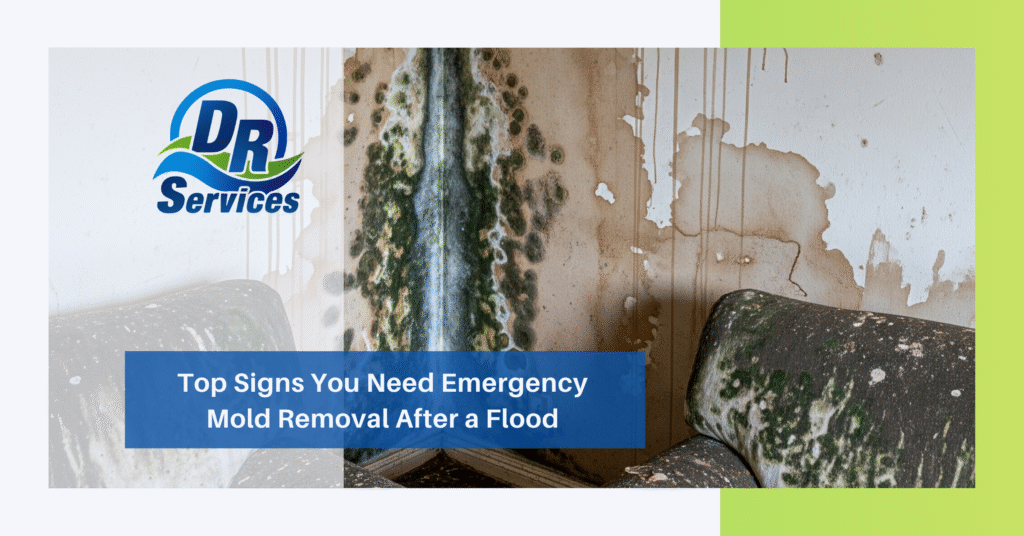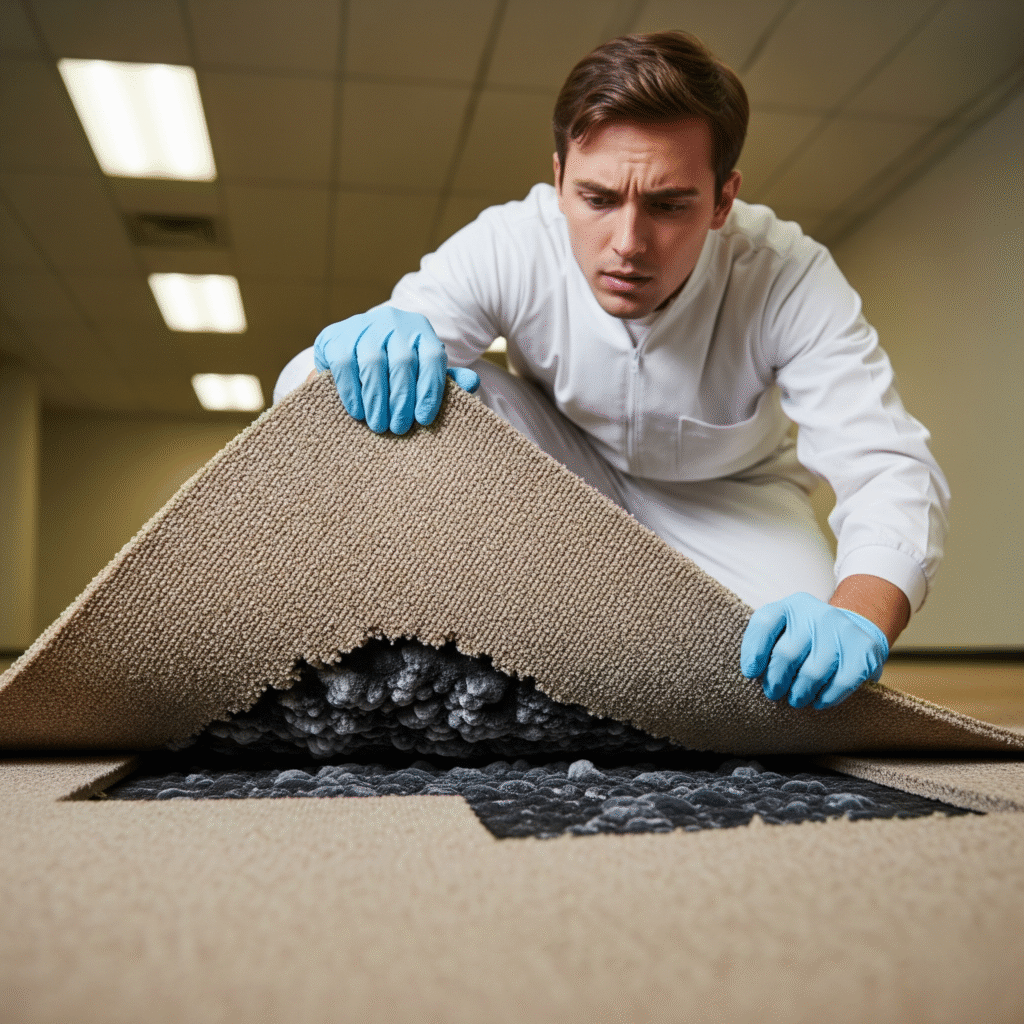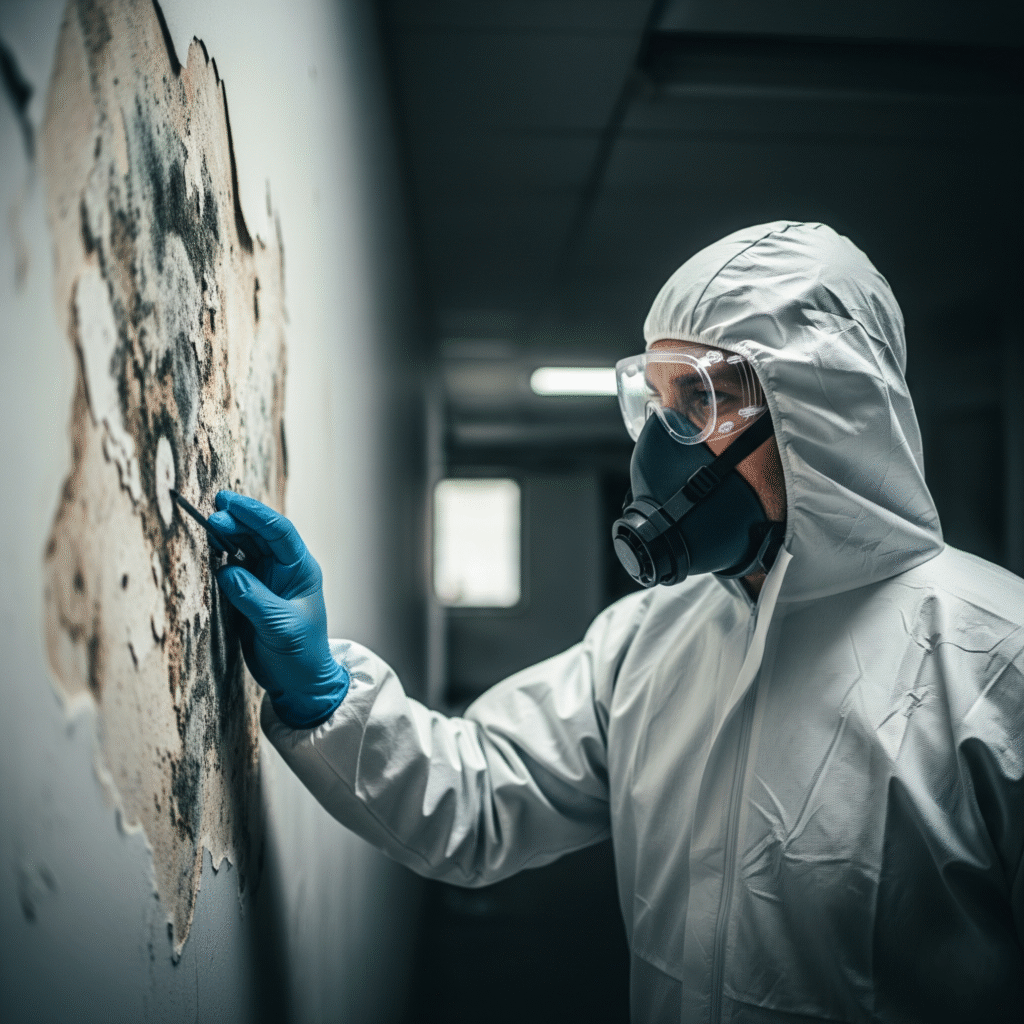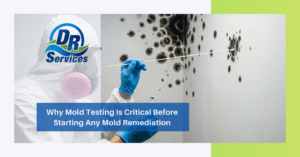Flooding can turn your home upside down in hours, but even after the water recedes, the real danger often remains hidden in your walls, floors, and ceilings: mold. Mold growth can begin in as little as 24–48 hours after water damage and quickly spread, harming your home’s structure and your family’s health.
Here are the top signs you need emergency mold removal after a flood, plus why acting fast matters more than you might think.
1. Musty, Earthy Odors That Won’t Go Away
One of the earliest signs of mold growth is a persistent musty smell. Even if your walls and floors look dry, mold can thrive inside cavities and under carpets.
If your home smells damp or earthy days after the flood, even with fans and dehumidifiers running, it’s a warning sign that mold may already be spreading out of sight.
2. Visible Spots or Stains on Walls and Ceilings
After a flood, mold often appears as black, green, or brown spots on drywall, ceilings, and baseboards. These stains can start small but spread rapidly as spores find new damp areas to grow.
Don’t assume small spots mean small problems; visible mold often indicates a larger hidden colony behind walls or under floors.
3. Peeling, Bubbling, or Warped Paint and Wallpaper
Water-damaged walls create the perfect environment for mold. If you notice paint blistering, bubbling, or peeling, or wallpaper warping and lifting, it could mean mold is growing beneath the surface.
4. Health Symptoms That Appear or Worsen Indoors
Mold exposure can trigger:
- Sneezing, coughing, or a runny nose
- Itchy eyes or skin
- Worsening asthma or allergy symptoms
- Headaches and fatigue
If these symptoms appear or get worse after a flood, especially when spending time indoors, it’s a strong sign of mold contamination that needs immediate attention.
5. Carpet and Upholstery Smell Damp or Feel Wet
Carpets, rugs, and upholstered furniture hold moisture long after surface water is removed. Even if they look clean, mold can quickly spread inside padding and fabric.
If your carpet smells musty or feels slightly damp days after drying efforts, mold removal should be scheduled immediately.
6. Water Damage in Hidden Areas
Floodwater can seep into crawl spaces, behind baseboards, inside HVAC ducts, and under flooring. Even if the main rooms look dry, hidden moisture can cause mold growth that spreads quietly.
Check lesser-used spaces like attics, closets, and basements carefully. If you can’t fully inspect them, call professionals who can use moisture meters and thermal imaging to detect hidden damp spots.
7. Persistent Condensation and High Humidity Indoors
If you notice condensation on windows, walls, or pipes long after a flood, your indoor humidity is likely still too high, creating perfect mold-growing conditions.
Running dehumidifiers helps, but if humidity stays above 50%, mold removal and professional drying may be needed.
8. Previous Mold Problems Return
If you had mold issues before and notice similar spots or smells after the flood, don’t wait, act immediately. Flooding can reactivate dormant spores and spread them further.
Professional mold remediation will remove active colonies and treat affected areas to prevent regrowth.
Why Emergency Mold Removal Matters
Mold doesn’t just damage drywall and carpets:
- It can compromise your home’s structure.
- It threatens your family’s health, especially children and seniors.
- DIY removal often spreads spores, making things worse.
- Quick action lowers costs and stops mold from becoming a large-scale infestation.
Professional mold remediation teams have the tools, training, and protective equipment to safely remove mold and dry your home thoroughly.
What to Do If You Suspect Mold After a Flood:
- Don’t delay: Mold spreads fast; waiting days can double the problem.
- Call certified professionals: Look for IICRC-certified mold removal specialists.
- Protect your family: Limit time in affected rooms and wear a mask when cleaning.
Final Thoughts
Flood recovery doesn’t end when the water disappears. Mold can silently take over your home in days, causing costly damage and health risks.
By watching for these signs, musty smells, visible stains, peeling paint, hidden damp spots, and new health symptoms, you can act quickly to protect your home and family.
Don’t wait. Emergency mold removal after a flood is an investment in safety, health, and peace of mind.







